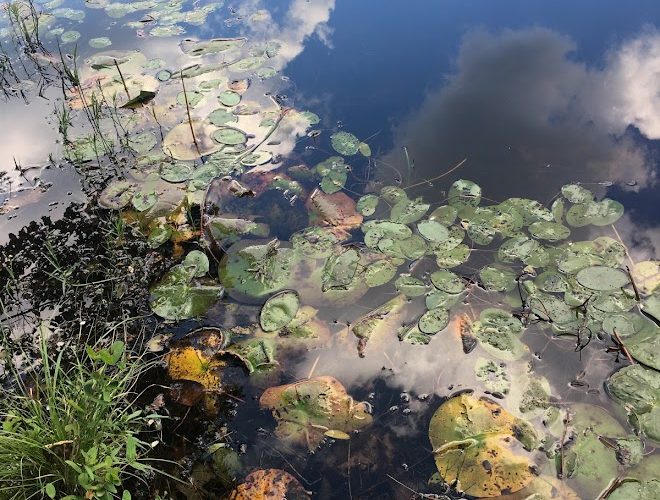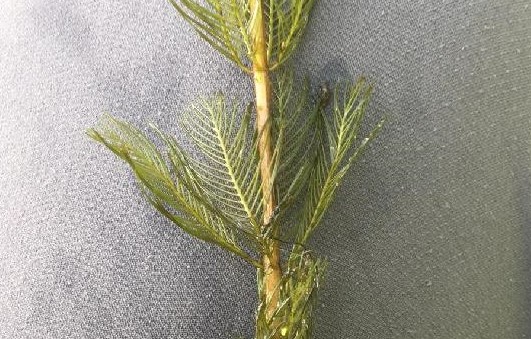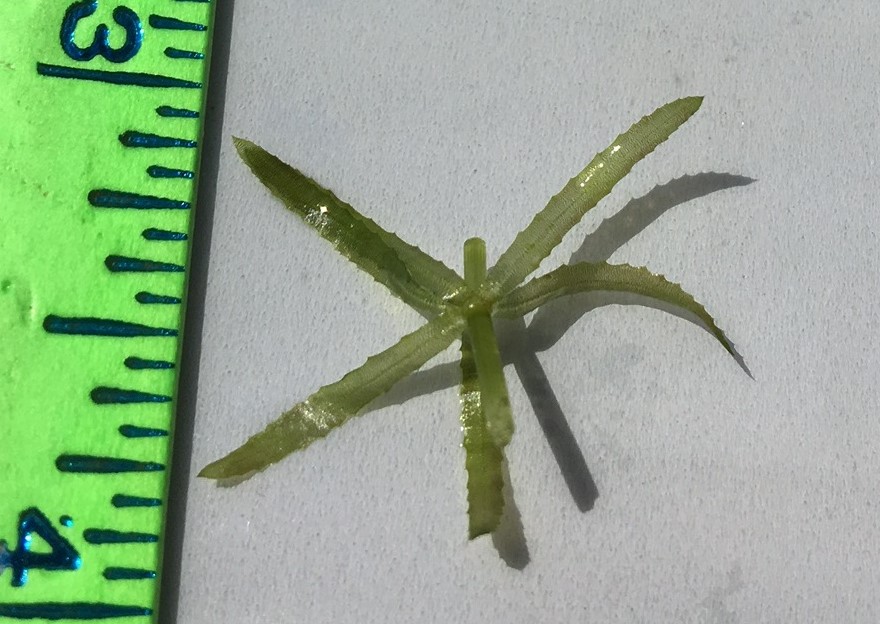
Written by Nick Decker, Park Manager that is an aquatic resource specialist for PA Department of Conservation and Natural Resources
Monitoring and understanding plants that are in the water is part of what I do. Although I am equally (if not more) enthusiastic about the positive things some plants provide to lakes, it is National Invasive Species Awareness Week. So, here are three invasive plants already widespread in lakes of Pennsylvania and some evidence they might be bringing more problems to the surface soon.
1) Curly-leaf pondweed (Potamogeton crispus)
 With a distinct leaf shape likened to a lasagna noodle or crinkle cut fry, one concern related to the presence of this plant is a relationship in which some of the most heavily algae laden lakes also have this species as a prominent member of their plant community. The plant tends to dieback right at the peak time for algae blooms that are havoc for recreational and habitat functions of a lake. Research into this relationship suggests that curly-leaf pondweed may not solely fuel the algae blooms, but its characteristics might contribute to them and that influence can be expected to increase as climate change continues (Heiskary & Valley, 2012; Johnson et al. 2012; McComas et al., 2015). This contrasts with some native plants that tend to continue to grow through this time of year and are recognized to have anti-algae properties.
With a distinct leaf shape likened to a lasagna noodle or crinkle cut fry, one concern related to the presence of this plant is a relationship in which some of the most heavily algae laden lakes also have this species as a prominent member of their plant community. The plant tends to dieback right at the peak time for algae blooms that are havoc for recreational and habitat functions of a lake. Research into this relationship suggests that curly-leaf pondweed may not solely fuel the algae blooms, but its characteristics might contribute to them and that influence can be expected to increase as climate change continues (Heiskary & Valley, 2012; Johnson et al. 2012; McComas et al., 2015). This contrasts with some native plants that tend to continue to grow through this time of year and are recognized to have anti-algae properties.
2) Eurasian watermilfoil (Myriophyllum spicatum)
 As one of the species of native and non-native plants bearing a feather-like leaf structure in the water, this plant forms large dense mats that make portions of water practically useless for people and some wildlife. Already a problem being actively managed for many years now, doing the job well could become even more difficult at seemingly any moment. Research has shown that when this plant is able to hybridize with its native relative it can have even “healthier” and more problematic invasive offspring (LaRue et al., 2013). The continual movement of either of these native or invasive relatives makes it increasingly likely the hybrid will be discovered in a lake.
As one of the species of native and non-native plants bearing a feather-like leaf structure in the water, this plant forms large dense mats that make portions of water practically useless for people and some wildlife. Already a problem being actively managed for many years now, doing the job well could become even more difficult at seemingly any moment. Research has shown that when this plant is able to hybridize with its native relative it can have even “healthier” and more problematic invasive offspring (LaRue et al., 2013). The continual movement of either of these native or invasive relatives makes it increasingly likely the hybrid will be discovered in a lake.
3) Hydrilla (Hydrilla verticillata)
 It seems fitting that this plant has leaves shaped like tiny serrated knives because it is capable of being a host for algae, Aetokthonos hydrillicola (Wilde et al., 2014). Aetokthonos is a word derived from Greek to mean “eagle killer”. Recent research reveals that hydrilla concentrates bromide from the water to facilitate toxin production by these algae. It is documented to be killing eagles in more southern states already (Breinlinger et al., 2021). So far, the most northern detection of the algae is reported to be Virginia.
It seems fitting that this plant has leaves shaped like tiny serrated knives because it is capable of being a host for algae, Aetokthonos hydrillicola (Wilde et al., 2014). Aetokthonos is a word derived from Greek to mean “eagle killer”. Recent research reveals that hydrilla concentrates bromide from the water to facilitate toxin production by these algae. It is documented to be killing eagles in more southern states already (Breinlinger et al., 2021). So far, the most northern detection of the algae is reported to be Virginia.
Go ahead, look in a lake this summer to see what you can find!
Want examples of what is being done to manage these plants?
Pymatuning Reservoir Hydrilla Project
Voluntary Checks at Boat Launches
Pennsylvania’s Noxious Weed List
Need help identifying these plants? Pennsylvania’s Field Guide to Aquatic Invasive Species
How to report a sighting of these plants? Pennsylvania iMap Invasives




